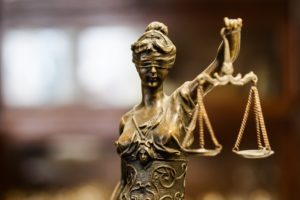The Way to Inclusion
The first roadblock to inclusion comes from not valuing and preserving our own uniqueness instead we attempt to look like anyone / somebody else flattening diversity.
Share This Post
The first roadblock to inclusion comes from not valuing and preserving our own uniqueness instead we attempt to look like anyone / somebody else flattening diversity.
HBR Review reported that the majority of employee downplays their differences in the workplace (Uncovering talent: a new model for inclusion – HBR). Since a young age we learn to dislike the unique blend that makes us diverse from each other. We want the same things our friends have, we try to blend in the group. If we do not blend in we are immediately labeled and ashamed as “the different one”. If we continue to use the word “different” as an insult we can’t possibly advance inclusion.
Is it possible to develop a new way of more inclusion? It is a way to resolve the fears of being excluded, rejected, because different. It is in fact a path that requires us to become fully visible in our unique diversities. And yet not labeled by them. This frighten us as we have instead since young age been conditioned to blend in, to fit in for the protection of the group. Because, this way, however painful, it seems safer. If, as leaders, we fail to encourage unique and diverse ways of being, we destroy our innate capacity to adapt. It requires a sense of shared meaning without denying our diversity. In our work to become more inclusive we need to focus on these three (3) key areas:
1) Integrity: its primary meaning, besides being honest and with ethical moral, is being whole, complete. Let’s look at ourselves and ask if we feel complete, whole? Or do we feel we had to carve out parts to fit in and be accepted or included? The parts we carve out in ourselves to conform are the same one we exclude in others. When we see the facets we neglect or exclude we can focus on “how” to reintegrate them in our lives. It is then easier to expand it to others. A true inclusive environment can only be possible when we start by addressing the multiple facets within us and find ways to integrate them so to become whole.
2) Inclusion: labelling people with their perceived differences (e.g. women leader; black man; xyz personality type) believing that this makes us know them actually it further increases their segregation. By labelling people we confine them (us too) into small categories that prevent us going further and deeper to really get to know their stories. In order to solve this challenge instead we need to create an environment where people can share safely their personal unique stories. It has been proven that when we know someone’s story it is easier to overcome fear, rage, hate. It does not mean we agree with everything they do or say but increases our acceptance of others.
3) Understanding: we need to understand that we only exist in relationship to each other. Life relies on diversity to give it the possibility of adapting to changing conditions. If a system becomes too homogenous, it becomes vulnerable to environmental shifts. If one form is dominant, and that form no longer works in the new environment, the entire system is at risk. This awareness is key to understand our relatedness and interdependence.
The loss of diversity isn’t just happening out there in organisations or governments; it starts within ourselves.
by Fateme Banishoeib, PhD
To read the full blog go to: http://www.societyfordiversity.org/the-way-to-inclusion/
Read more Posts

The Transformational Power of Resistance
Are organizations that go through these motions but fall short of impactful follow-through demonstrating laziness or a lack of integrity?

Strategies for Mitigating Implicit Bias in the Legal Field
Unconscious bias can have a range of implications and potential consequences for legal professionals, including shaping interpersonal dynamics with prospective and current clients and colleagues and, in turn, influencing organizational dynamics at the smallest law practices and the largest firms alike.
